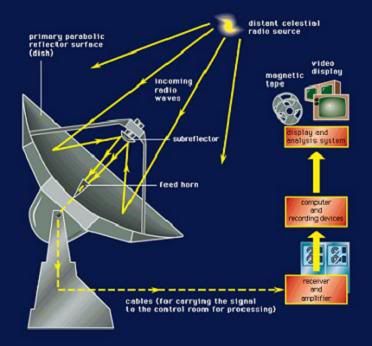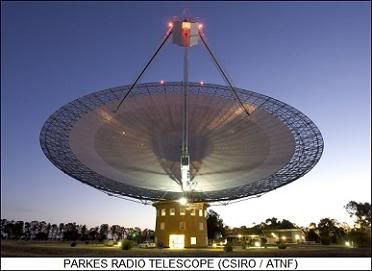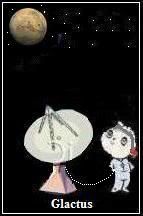Post by glactus on Aug 23, 2011 2:35:56 GMT
The development of the telescope in the 17th century was one of the first great revolutions in astronomy, opening up the details of the sky in the visible-light range. However, by the beginning of the 20th century astronomers knew that there were other parts of the electromagnetic spectrum that were invisible, and which could reveal new aspects of the sky.

The Radio telescope operation
Development of electronic systems during World War II opened the door to the first region of the invisible sky to be observed, in the radio wavelength band, leading to the introduction of the first radio telescopes in the postwar period. This chapter provides a history of radio telescope technology.

The Parks radio telescope- Australia
As the British and Australians blazed paths in radio astronomy, the Americans continued to sit on their hands. Jesse Greenstein found the situation frustrating and decided to take action. At the time, in the early 1950s, Greenstein was at Caltech, working on the organization of an observing program for the new Hale telescope. Greenstein wanted Caltech to fund a radio interferometer array, but the authorities were cautious about the matter. To push the issue, Greenstein set up an international conference on radio astronomy in Washington DC in early 1954.

The Jodrell Bank radio telescope - United Kingdom
The conference brought emerging American interest in radio astronomy to a boil. With backing from the US National Science Foundation (NSF), a group of researchers set up a government-backed "National Radio Astronomy Observatory (NRAO)" in Greenbank, West Virginia. Of course, Greenstein got his radio interferometer array as well, which was built by Caltech in Owens Valley, California.
While the Americans were getting up to speed, radio astronomers elsewhere continued their efforts. In 1957, the Jodrell Bank site put Bernard Lovell's "Mark I" radio telescope into operation. It was the biggest fully steerable radio telescope, 76.2 meters in diameter. It was used to monitor early space shots and occasionally showed up as a background prop in sci-fi shows like DR WHO. It was upgraded in 1970:1971 and 2001:2003, being renamed the "Lovell Telescope" after the second upgrade. A number of other, smaller radio telescopes have been set up at or near the Jodrell Bank site, which is open to the public as an arboretum.
To see video just click on the link below. Has sound.
science.discovery.com/videos/cosmos-radio-telescopes.html

The dish
Credits: These are non copywrite images
text by Wikipedia
Video by Youtube

The Radio telescope operation
Development of electronic systems during World War II opened the door to the first region of the invisible sky to be observed, in the radio wavelength band, leading to the introduction of the first radio telescopes in the postwar period. This chapter provides a history of radio telescope technology.

The Parks radio telescope- Australia
As the British and Australians blazed paths in radio astronomy, the Americans continued to sit on their hands. Jesse Greenstein found the situation frustrating and decided to take action. At the time, in the early 1950s, Greenstein was at Caltech, working on the organization of an observing program for the new Hale telescope. Greenstein wanted Caltech to fund a radio interferometer array, but the authorities were cautious about the matter. To push the issue, Greenstein set up an international conference on radio astronomy in Washington DC in early 1954.

The Jodrell Bank radio telescope - United Kingdom
The conference brought emerging American interest in radio astronomy to a boil. With backing from the US National Science Foundation (NSF), a group of researchers set up a government-backed "National Radio Astronomy Observatory (NRAO)" in Greenbank, West Virginia. Of course, Greenstein got his radio interferometer array as well, which was built by Caltech in Owens Valley, California.
While the Americans were getting up to speed, radio astronomers elsewhere continued their efforts. In 1957, the Jodrell Bank site put Bernard Lovell's "Mark I" radio telescope into operation. It was the biggest fully steerable radio telescope, 76.2 meters in diameter. It was used to monitor early space shots and occasionally showed up as a background prop in sci-fi shows like DR WHO. It was upgraded in 1970:1971 and 2001:2003, being renamed the "Lovell Telescope" after the second upgrade. A number of other, smaller radio telescopes have been set up at or near the Jodrell Bank site, which is open to the public as an arboretum.
To see video just click on the link below. Has sound.
science.discovery.com/videos/cosmos-radio-telescopes.html
The dish
Credits: These are non copywrite images
text by Wikipedia
Video by Youtube


